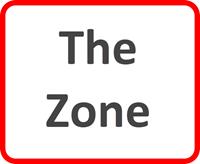The Federal Reserve’s Magic Number for Inflation: Unveiling the Significance of 2 Percent
In the world of economics, numbers hold immense power. They can dictate the fate of nations, shape monetary policies, and determine the well-being of individuals. One such number that has been the subject of much debate and speculation is the Federal Reserve’s magic number for inflation: 2 percent.
For years, economists and policymakers have grappled with the question of what constitutes a healthy level of inflation. Too high, and it erodes the purchasing power of consumers, leading to economic instability. Too low, and it can hinder economic growth and investment. The Federal Reserve, as the central bank of the United States, plays a crucial role in maintaining price stability and promoting economic growth. And at the heart of their strategy lies the enigmatic number of 2 percent.
But why 2 percent? What makes this number so special? To understand its significance, we must delve into the world of monetary policy and the goals of the Federal Reserve. The central bank’s primary mandate is to promote maximum employment and stable prices. Inflation, as measured by the Consumer Price Index (CPI), is a key indicator of price stability. The Federal Reserve has set a target of 2 percent inflation, considering it to be the optimal level for a healthy economy.
At first glance, 2 percent may seem arbitrary, but it is rooted in economic theory and empirical evidence. Historically, economies with moderate inflation have experienced higher levels of economic growth and lower unemployment rates. A mild level of inflation encourages spending and investment, as consumers and businesses are motivated to make purchases before prices rise further. It also allows for nominal wage increases, which can boost consumer spending and overall economic activity.
On the other hand, high inflation can lead to uncertainty and distortions in the economy. When prices rise rapidly, consumers may delay purchases, anticipating further price increases. This can dampen economic activity and hinder investment. Additionally, high inflation erodes the value of savings and fixed-income assets, disproportionately affecting those on fixed incomes or with limited financial resources.
Conversely, low inflation or deflation can be equally detrimental to the economy. When prices fall, consumers may postpone purchases, expecting further price declines. This can lead to a vicious cycle of reduced demand, lower production, and job losses. Deflation also increases the burden of debt, as the real value of debts rises in a deflationary environment.
By setting a target of 2 percent inflation, the Federal Reserve aims to strike a delicate balance between these competing forces. It provides a cushion against deflationary pressures while avoiding the risks associated with high inflation. This target also allows the central bank to maintain credibility and anchor inflation expectations. When businesses and consumers have confidence that inflation will remain stable, they can make informed decisions about spending, investment, and borrowing.
However, achieving and maintaining this 2 percent target is no easy feat. Inflation is influenced by a myriad of factors, including global economic conditions, fiscal policies, and supply shocks. The Federal Reserve employs various tools, such as adjusting interest rates and implementing quantitative easing, to steer inflation towards its target. These decisions are made based on careful analysis of economic data and forecasts.
In recent years, the Federal Reserve has faced challenges in achieving its 2 percent inflation target. Despite a decade of economic expansion and low unemployment, inflation has remained stubbornly below the desired level. This has prompted some economists to question the effectiveness of the 2 percent target and advocate for a higher target or a different approach to monetary policy.
As the world grapples with the economic fallout of the COVID-19 pandemic, the debate around the Federal Reserve’s magic number for inflation has gained renewed significance. With unprecedented levels of government stimulus and central bank interventions, concerns about inflationary pressures and the long-term consequences of these policies have emerged.
In conclusion, the Federal Reserve’s magic number for inflation, 2 percent, is not just a random figure. It is a carefully calculated target that aims to strike a balance between economic growth, price stability, and the well-being of individuals. While achieving this target may be challenging, it remains a crucial goal for the central bank as it navigates the complex world of monetary policy. As the world evolves, so too may the magic number, but for now, 2 percent remains the guiding star for the Federal Reserve.





